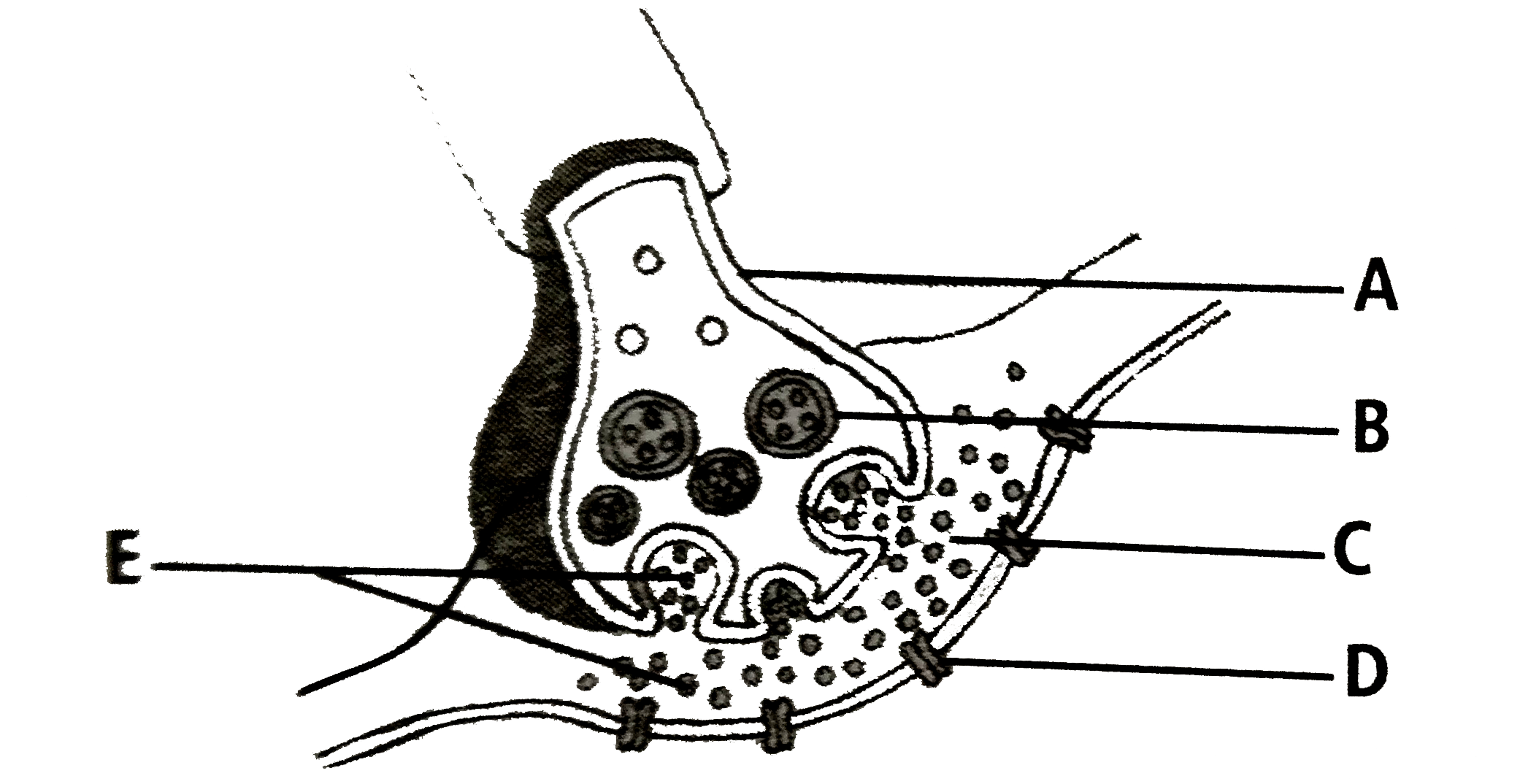Identify plants which show modification of axillary buds into tendrils and hooks respectively
(a)Hugonia(b)Duranta(c)Passiflora(d)Dioscorea
a and b
c and a
b and c
d and a
The correct Answer is:B
To solve the question of identifying plants that show modifications of axillary buds into tendrils and hooks, we can follow these steps:
1. Understanding the Question: We need to identify two types of modifications of axillary buds: one into tendrils and the other into hooks.
2. Identifying Tendrils:
- Tendrils are slender, spirally coiled structures that help plants climb.
- From the options provided, we need to find a plant known for having tendrils.
3. Identifying Hooks:
- Hooks are woody, curved structures that can also assist in climbing or anchoring.
- Similarly, we need to find a plant from the options that is known for having hooks.
4. Analyzing the Options:
- (a) Hugonia: Known for modifications into hooks.
- (b) Duranta: Known for thorns, not tendrils or hooks.
- (c) Passiflora: Known for modifications into tendrils.
- (d) Dioscorea: Known for bulbils, not tendrils or hooks.
5. Conclusion:
- From the analysis, we conclude that:
- Tendrils are found in Passiflora (Option C).
- Hooks are found in Hugonia (Option A).
6. Final Answer: Therefore, the correct identification of plants is:
- Tendrils: Passiflora (C)
- Hooks: Hugonia (A)
Final Answer:
- Tendrils: Passiflora (C)
- Hooks: Hugonia (A)
- Tendrils are slender, spirally coiled structures that help plants climb.
- From the options provided, we need to find a plant known for having tendrils.
- Hooks are woody, curved structures that can also assist in climbing or anchoring.
- Similarly, we need to find a plant from the options that is known for having hooks.
- (a) Hugonia: Known for modifications into hooks.
- (b) Duranta: Known for thorns, not tendrils or hooks.
- (c) Passiflora: Known for modifications into tendrils.
- (d) Dioscorea: Known for bulbils, not tendrils or hooks.
- From the analysis, we conclude that:
- Tendrils are found in Passiflora (Option C).
- Hooks are found in Hugonia (Option A).
- Tendrils: Passiflora (C)
- Hooks: Hugonia (A)
- Tendrils: Passiflora (C)
- Hooks: Hugonia (A)
Topper's Solved these Questions
Similar Questions
Identify the scientists who worked extensively on chlorophyllous and nonchlorophyllous thallophyes respectively
(a)Iyengar
(b)Swaminathan
(c ) Mehta
(d) Maheshwari
View SolutionCertain attributes of innate immunity are given in the table below. Identify A,B,C,D,E and F respectively in it.

View Solution
Knowledge Check
The given diagram shows axon terminal and synapse. Here A,B,C,D and E respectively represent
 AAxon terminal, Synaptic cleft, Synaptic versicles, Neurotransmitters and ReceptorsBAxon terminal, Synaptic vesicles, Synaptic cleft, Receptors and NeurotransmittersCSynaptic cleft, Synaptic vesicles, Axon terminal, Neurotransmitters and ReceptorsDSynaptic cleft, Axon terminal, Synaptic vesicles, Neurotransmitters and Receptors
AAxon terminal, Synaptic cleft, Synaptic versicles, Neurotransmitters and ReceptorsBAxon terminal, Synaptic vesicles, Synaptic cleft, Receptors and NeurotransmittersCSynaptic cleft, Synaptic vesicles, Axon terminal, Neurotransmitters and ReceptorsDSynaptic cleft, Axon terminal, Synaptic vesicles, Neurotransmitters and Receptors
Write the concentration of CO2 at which C3andC4 plants shows saturation respectively.
View SolutionThe figure given below shows mode of action of AIDS virus. Identify steps A, B, C, D and E labelled in it.

View SolutionWhich ones show stipular modifications
(a) Spines of Zizyphus
(b) Tendrils in Smilax
(c) Tendrils in Nepenthes
(d) Spines in Argemone
(e) Thorn in Bougainvillea
View SolutionIn the given diagrams, A ( spine ) and B ( tendril ) are structured which are modifications of the stem. Then , probable examples of plants in which A and B can be observed , respectively , will be. :

View SolutionThe figure given below shows mofe of action of AIDS virus. Identify steps A, B, C, D and E labelled in it.

View SolutionIdentify the wrong statements
(a) Genetic modifications in plants helped to reduce post-harvest losses
(b) In Tobacco, cry genes are introduced against nematodes
(c) In gene therapy, healthy genes are inserted into person's cells and tissues to treat diseases
(d) Injustice, inadequate compensation and benefit sharing are related to molecular diagnosis.
View SolutionWhich of the following plants groups shows internal fertillsation only ?
(a) algae , (b) Bryophytes
(c ) Pteridophytes , (d) Fungi
View Solution
